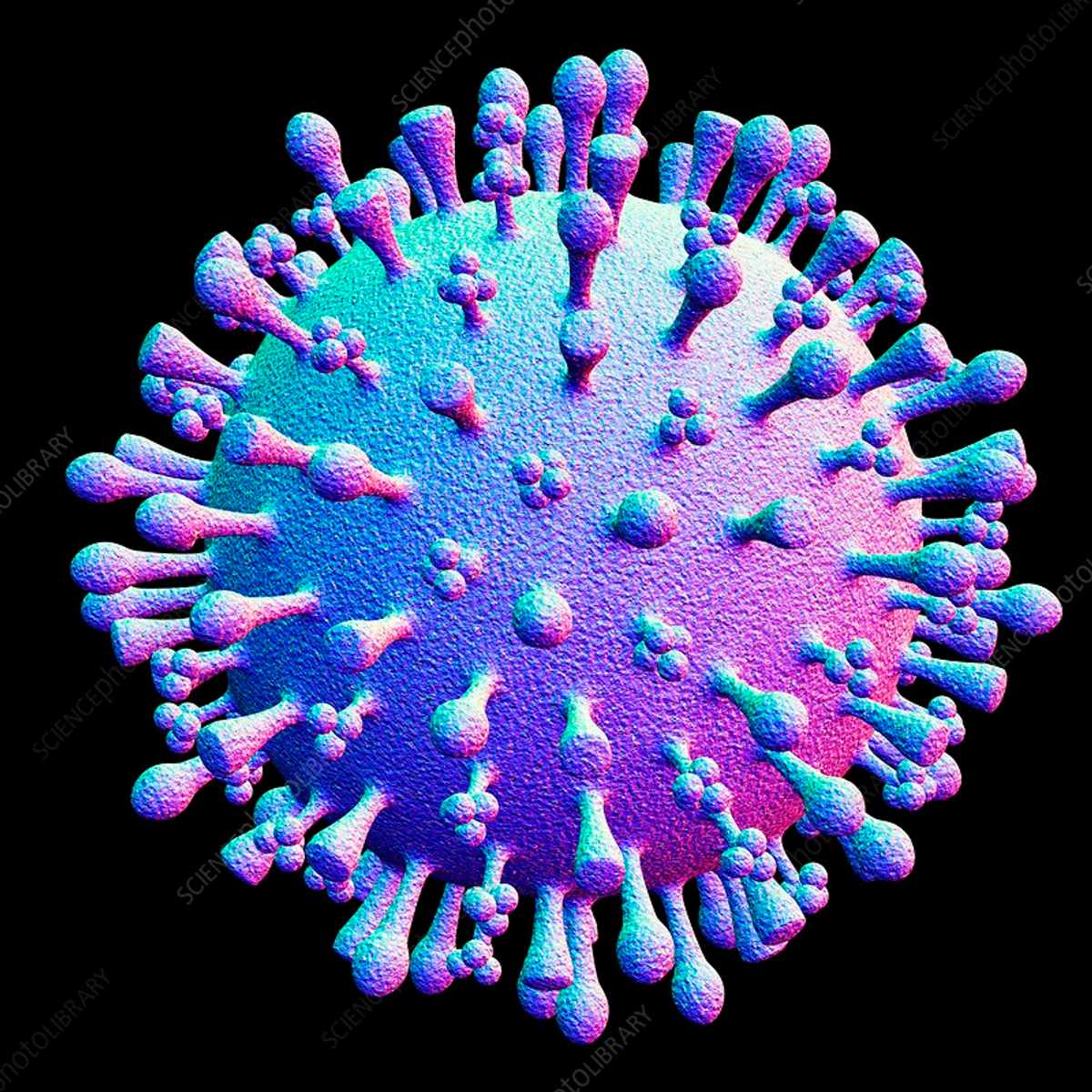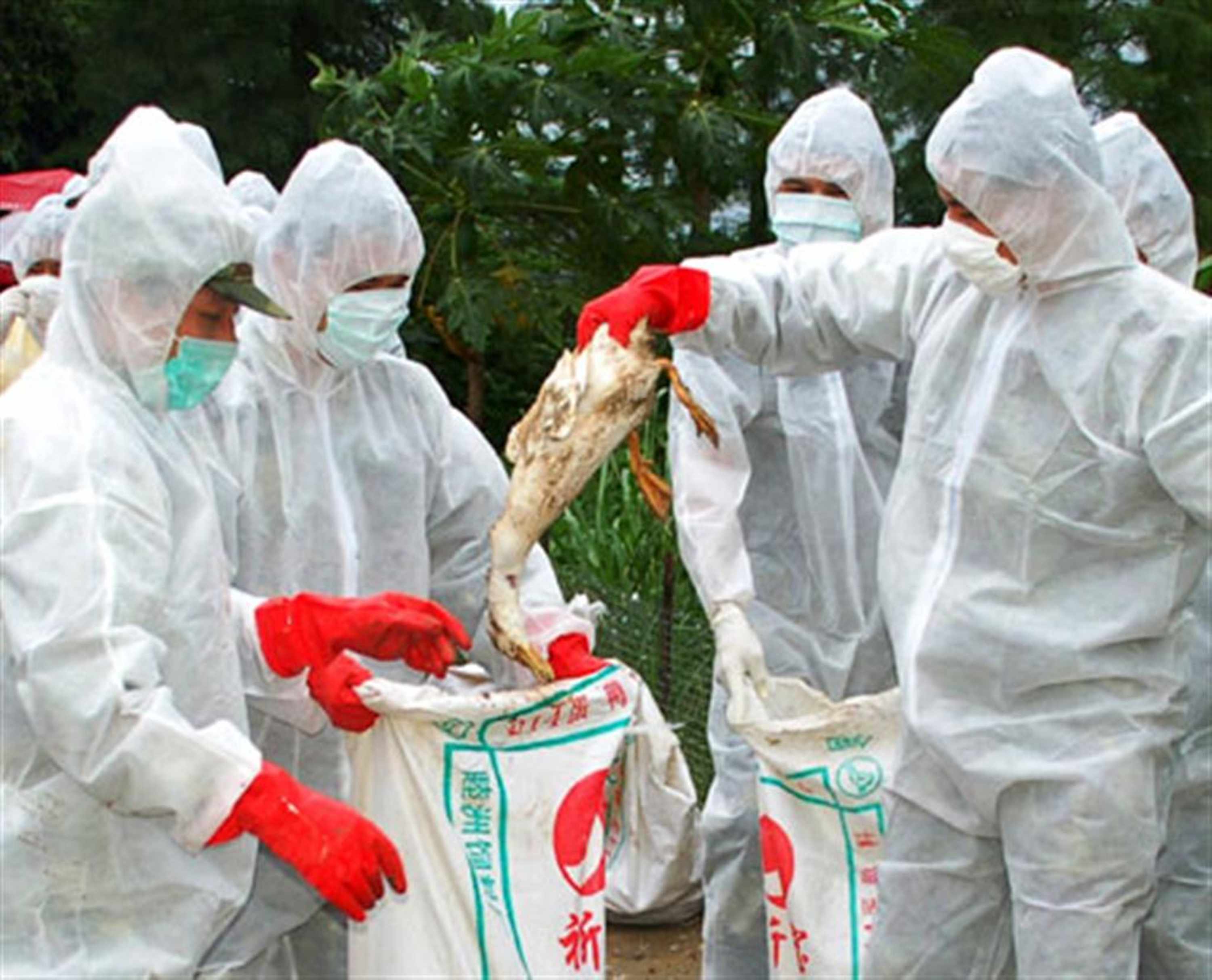Understanding the risk bird flu presents gives clear direction to how we should change industrial agriculture
Understanding the risk bird flu presents gives clear direction to how we should change industrial agriculture

Graphic representation of an avian influenza virus
The ‘flu’ has been around for a long time, and we are all familiar with it. But despite its ‘everyday’ quality, it has proved a very dangerous thing indeed. Each year across the world, it is estimated to kill about 400,000 people. Hence, campaigns in the U.K., for example, to ‘get your jab’ in first. Periodically, the flu virus changes and becomes highly virulent, leading to pandemics that have killed millions.
Most famously, in 1918, a flu pandemic, sometimes called ‘the Spanish flu’, killed an estimated 40 million people around the world. The virus that initially caused the outbreak is thought likely to have been a type of bird flu (avian influenza), though there are dissenting opinions. Later major flu pandemics, for example, in 1957 and 1969, that each killed more than a million people, have now been unambiguously associated with bird flu viruses.
Between 2021 and 2022, a new ‘highly pathogenic’ bird flu virus, known as H5N1, has swept around the world, decimating wild bird populations, and causing the death or culling of over 400 million poultry. Could this virus cause a new pandemic?
H5N1 human infection?
The H5N1 variant now circulating is ‘highly pathogenic’ in that it often causes severe disease and high mortality in birds. Ordinarily, circulating avian influenza viruses do not have such severe effects. The virus has infected many mammal species too, sometimes with high levels of mortality, such as in sea lion colonies.
Since 1996, when the current H5N1 strain first emerged, it has caused several hundred human deaths, but, overwhelmingly, only in instances where a person has had direct contact with infected poultry. Between 2020 and 2023, there were only 12 reported cases of human infection. There appears to have been almost no ‘human-to-human’ transmission. The advice from Governments is that, at present, it presents a low risk of human disease.
However, there have been many concerns expressed that things could change. While the current version of the virus is highly adapted to infect birds, only a small number of mutations might need to occur for human-to-human transmission to arise. Recently, for example, a human gene has been identified that confers human resistance to most avian influenza viruses, but about 50% of circulating virus strains already show resistance to this.
A particular concern is the potential for mixing of the virus with a human flu virus. That ‘mammal-to-mammal’ (if not yet human-to-human) transmission is a real-world risk has now been highlighted by evidence of mink-to-mink transmission in the crowded conditions of mink farms, and possibly of transmission between sea-lions too.

After the development of highly pathogenic virus strains in commercial poultry, these have spread around the world along migratory routes of wild birds
Where did the virus come from?
The variant of H5N1 that is circulating currently arose in 1996 in China, associated with commercial goose production. Subsequently, there were outbreaks in many chicken farms. Despite initial wholesale culling of poultry, new versions of the virus emerged. The H5N1 virus has subsequently spread over great distances through bird migratory routes and transport of live poultry and poultry products along trade routes.
The original virus will have been of low pathogenicity but, likely in the context of high-density poultry production, became highly pathogenic. In one scientific review of evidence, 37 out of 39 instances of change from a low pathogenic to a high pathogenic avian influenza virus form were associated with commercial poultry production.

The highly pathogenic H5N1 strain has devastated wild birds - particularly seabirds and wading birds
Pandora’s Box
The H5N1 virus has now spread around the world, first from south-east Asia, then into Europe and Africa, and latterly into North America. It is predicted shortly to be found in Australasia and the Antarctic. While, formally, tens of thousands of wild birds have died, the true figure is more likely to be in the tens of millions. Such infection is very difficult to control.
It presents significant difficulties for the prevention of infection of commercial poultry flocks. While the height of H5N1 infection in commercial poultry occurring in 2021 and 2022 appears, for the moment, to have subsided, the potential for recurrence is real, particularly when winter is entered. Unusually, in wild birds, the virus has proved remarkably persistent, presenting continued risk of further spread.

When infection is confirmed in poultry flocks, wholesale culling is carried out
Response to the virus
The focus internationally has been on monitoring the nature and spread of the virus. In the rare cases where a person has become infected, they will be isolated, and ‘contact tracing’ undertaken. To try to protect poultry from infection, measures to prevent contact with wild birds are often implemented. The U.K., for example, has, until very recently, been defined as an Avian Influenza Protection Zone (AIPZ) with biosecurity measures mandated, including (until April of this year) the requirement that commercial poultry flocks be kept inside.
Vaccines are potentially available to protect poultry from current strains, but, while they have long been used in areas where variants of a virus have become endemic, such as China, they are only now being considered in Europe and North America, with concerns voiced about impacts on trade. The high mutability of the virus means that vaccines may not remain effective.
Human vaccines are at various stages of development but are likely to need to be refined and produced at very large scale in a short period were human-to-human transmission to occur. The financial cost of this to society would be enormous. Concern has been expressed by leading public health experts, including most recently by Professor Devi Sridhar, Chair of Global Public Health at Edinburgh University, about continued lack of preparedness for such an event.
The intensive production of 'meat' chickens. The video was filmed in Australia but shows conditions of rearing that are typical in the U.K., Europe and across the world
A reactive approach
The current major H5N1 impacts on poultry have been preceded by many other instances where highly pathogenic H5 and H7 variants of bird flu have caused the deaths of more than a million poultry. Efforts to prevent infection of poultry premises by H5N1 have proved only partly successful. They are probably fundamentally impossible to entirely control. The experience of Covid-19 showed that public agencies were not able to predict a succession of new mutations, where they would occur, or their potential virulence or transmissibility. The same is likely to be true for the further progression of bird flu viruses.
Smell the coffee
The fundamental risk for the development of highly pathogenic bird flu viruses is the way that poultry are reared. It is infection arising from this that has caused poultry to be culled in their tens of millions (often in the most grotesque ways, such as by ventilation shutdown or suffocation in carbon dioxide foam), the massive loss of wild birds, harms to biodiversity, and the potential for another human pandemic.
Stressed, genetically uniform animals, kept at high density provide a crucible for viral mutation and development. In such contexts, the normal selection pressure against causing death of the host is negated as an infected bird can readily transmit virus before it itself dies. Highly pathogenic strains are the result.
The commercial equation seems to be that all of this is somehow justified so long as agribusinesses can continue to profit, and food prices are low. Cheap chicken at any price. This is unacceptable. We need to change the way that we treat animals and to show them the care they deserve. We must end factory farming. Until then, we can expect one outbreak after another of viral infections that decimate poultry, create risks for both wild animals and humans, and potentially cost society billions to remedy. It’s down to all of us not to eat animals from these sources – if we change the way we eat, then real change is possible.
The author acknowledges with many thanks the advice and input of Fiona Pereira.


